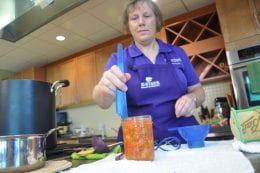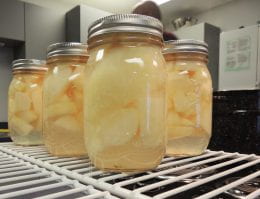
When cooking any meat, poultry, and egg products, a food thermometer is the best tool in your kitchen to determine if the food is done and safe for consumption.
What does “doneness” mean? It is when the food is cooked properly and has desirable sensory aspects of the food such as texture, appearance, and juiciness. These are subjective.
Safely cooked food is when pathogenic microorganisms, which can cause illness, are destroyed. The “doneness” temperature is the minimum internal temperature to destroy these harmful microorganisms. This temperature varies by food product. The food thermometer is the best tool to measure temperature accurately. It can also help keep from overcooking the food.
Using color to determine “doneness” is not reliable. Research has shown that using meat color is unpredictable. Hamburger patties may be brown in the middle, yet the temperature has not reached the 160°F minimum temperature. Also, the patty may be pink in the middle, yet the temperature has reached the 160°F temperature.
Remember these three temperatures:
- 145°F for steaks, roasts, chops, fish
- 160°F for ground meat; egg recipes
- 165°F for all poultry; reheating leftovers; casseroles
Source: USDA FSIS Kitchen Thermometers and Safe Minimum Internal Temperature Chart

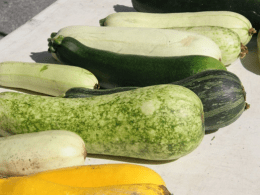 Recommendations for canning summer squashes, including zucchini, that appeared in former editions of So Easy to Preserve or USDA bulletins have been withdrawn due to uncertainty about the determination of processing times.
Recommendations for canning summer squashes, including zucchini, that appeared in former editions of So Easy to Preserve or USDA bulletins have been withdrawn due to uncertainty about the determination of processing times.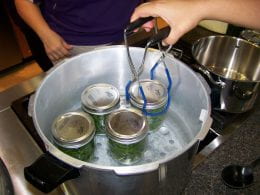
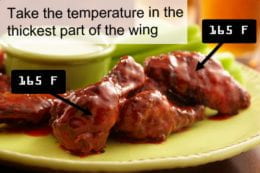 Chicken wings are very popular. But Salmonella has been the spoiler due to improper cooking. Many cooks do not use a food thermometer or just use visual clues for doneness. The recommended internal temperature for all poultry products is 165°F.
Chicken wings are very popular. But Salmonella has been the spoiler due to improper cooking. Many cooks do not use a food thermometer or just use visual clues for doneness. The recommended internal temperature for all poultry products is 165°F.